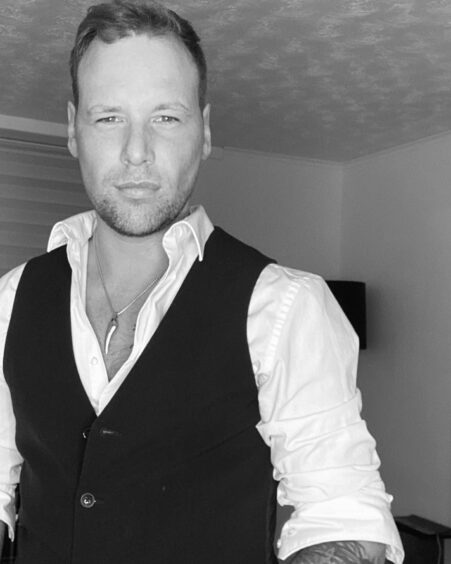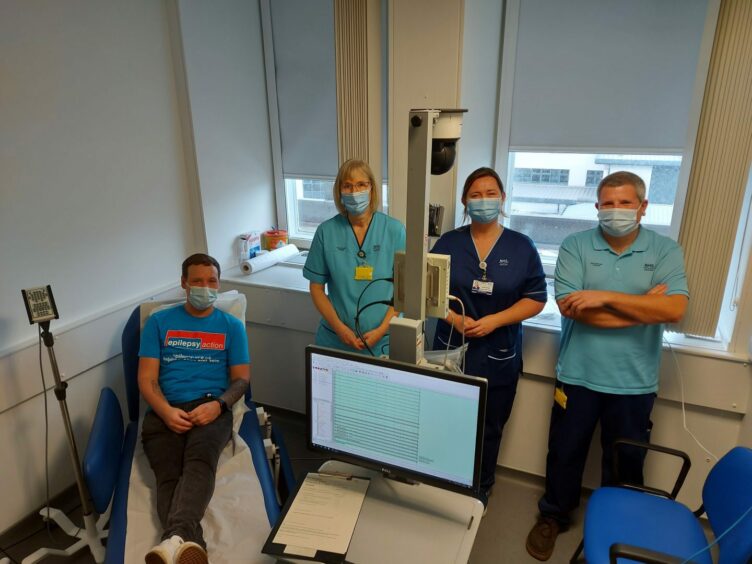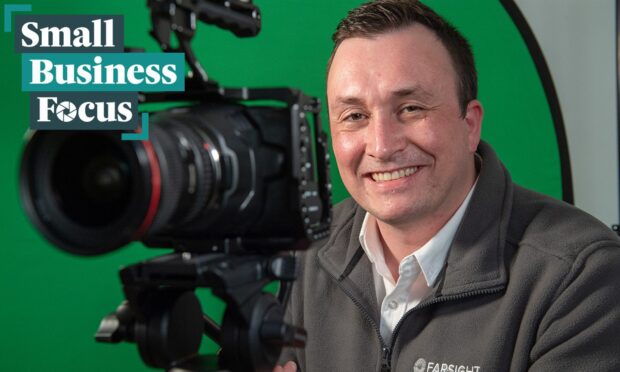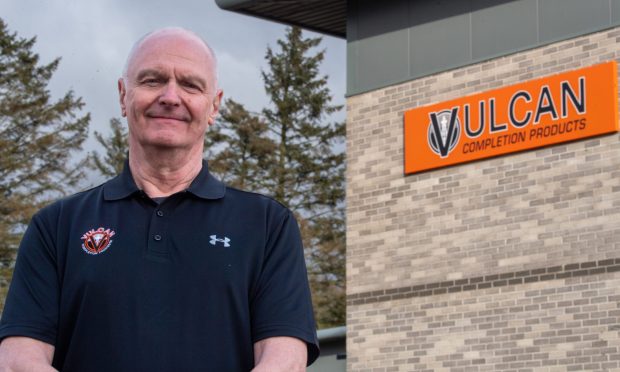Since being diagnosed with epilepsy a decade ago, Lee Findlay’s life as he knew it has gone “out the window”.
The nurse only leaves his house to go to work or to pick up his daughter, afraid that he might not be able to get help if he goes elsewhere.
The 37-year-old’s seizures can last anywhere from 20 minutes to 12 hours, and often he is left with no memory of that time, and comes around exhausted and disorientated.
Sometimes he only knows he’s had a seizure when he finds a note left by paramedics.
But determined to raise awareness of neurological conditions, and the efforts of the staff who treat him at Aberdeen Royal Infirmary, Mr Findlay challenged himself to walk 10,000 a day throughout October.
Money raised will go to the neurology and neurosciences departments, where he described the staff as “second to none”.
‘I can’t remember my name half the time’
Mr Findlay says life has changed dramatically since his diagnosis, and that he honestly does not know how often the seizures happen.
“I have a young daughter, she’s nine years old,” he said.
“Unless I’m picking her up or I’m going to work, I tend not to leave the house.
“If I was to have a seizure in the house, I can get help but there’s no guarantee that I could get it out in the street.”
When asked how often they happen, Mr Findlay struggled to answer.
“It’s hard to tell because I don’t remember most of them,” he said.
“I go by what the hospital say, or if the ambulance has been.
“So officially, I probably have about two of the what you would see on TV seizures but I could have probably maybe a dozen or more kind of little ones every month.
“When you come out of a seizure, it’s confusing. You don’t know who you are. I can’t even remember my name half the time.
“One weekend recently, I had a seizure and the only reason I knew I’d had a seizure is because the paramedics had put a letter through my door to say that they’d been here and what happened.
“I’ve had multiple head injuries. I have several scars on my forehead, on the back of my head, my knees and my arms.
“When you’re having seizures, you tend to fall backwards. But as you can kind of come around from it, you just stumble and you kind of fall into things. And it just gets messy.
“But you’ve also got an emotional kind of thing where you’ve lost time and you don’t know why.”
Mr Findlay added a lot of people fail to recognise that seizures are not always “convulsions on the floor” but it can sometimes look as if he is just daydreaming.
‘Affects you physically mentally, emotionally and socially’
In 2015, after starting a new medication for epilepsy, the father-of-one ended up with kidney failure.
After spending three days in intensive care, he was in the neurology ward for two weeks.
“The care there is absolutely phenomenal,” he said. “I mean, the bedside manner is second to none.”
Being a nurse himself at Aberdeen Royal Infirmary, Mr Findlay said he has been on “both sides of the fence” and has walked several patients through a neurological diagnosis.
He added: “I’ve met adults recently within my ward who have been diagnosed with a sudden onset of epilepsy and it completely throws your life out the window. It affects you physically mentally, emotionally and socially – everything.”
Mr Findlay said he was very fortunate to also have a good team who understand his condition.
He hopes his fundraising mission will also help raise awareness of the various neurological conditions.
While any money raised will go to the neurology and neurosciences department at Aberdeen Royal Infirmary towards patient comfort and treatment, he said: “I want to raise awareness about the fact that there’s neurological diseases and illnesses.
“And people tend to forget that it is something that impacts lives.”
More than £200 has been raised through online and offline sponsorship. To support the effort, visit his GoFundMe page.














Conversation